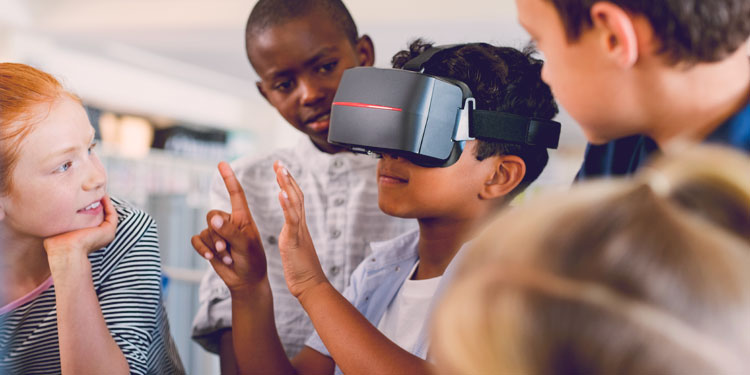Technology has been an essential part of the Finnish education system for over two decades now. The early days of computer-based learning were rather underwhelming for the students; many programs and sites were not user-friendly, visually appealing or pedagogically inspiring. Still, we had it better than a large part of the world since most Finnish schools had up-to-date devices, a working internet connection, skillful teachers and a curriculum, which acknowledged the importance of ICT skills.
Finland would not be the educational innovation hub of today without our vibrant and international EdTech community. The results speak for themselves – EdTech has been proven to improve the pupils’ engagement and study outcomes, make learning more flexible and customized, as well as teach important skills for the future.
You Don’t Have to Stand Alone
Did you know that Finland is actually one of the best places for an EdTech company, because we have an access to the best talent in the education and technology sectors? Or that the Finnish EdTech ecosystem is based on powerful partnerships, where educators and innovators build meaningful products together?
Since different parties have a role in the development and implementation process, EdTech solutions are multivocal, and contain a ton of personal investment from various experts. Especially when the teachers’ get to participate and influence the end product, they tend to perceive EdTech in a more positive light.
Collaboration is also a great comfort during times of need. Good News from Finland writes about a special case: ” Finnish edtech companies have discovered new opportunities for co-operation and development amidst an increased demand for digital learning solutions due to the coronavirus pandemic”. Since the COVID-19 pandemic has hindered education worldwide, Finnish EdTech companies rose together to the occasion and created initiatives for supporting teachers with an array of free, multi-languaged e-learning tools.
The Future Is All About Engaging the Learner
In addition to making sure students’ acquire basic ICT skills, there are other prominent trends in the current EdTech scene, like teaching future skills with immersing and emerging technologies.
As modern smartphones and other devices are becoming more affordable and readily available, new possibilities have opened up. Case in point, innovations like augmented reality (AR), virtual reality (VR) and artificial intelligence (AI), have become viable learning tools in schools worldwide.

AR gives the user a multi-sensory interactive experience, where real-world elements are mixed with the virtual environment. VR on the other hand, creates a sensory-based simulation space, which can mimic reality or be completely out of this world. Used in right contexts, both can have an important role in enhancing learning engagement and developing hands-on tech skills for example learners can experience tropical forest and the diverse nature in the natural science lesson straight from classroom or solve mathematical problems while playing an exciting room escape-game.
AI is predicted to take up more than half of work tasks in the future, which is why children need to learn how it can be harnessed appropriately. Schools can also use AI to support and optimize teaching; it can monitor students’ progress more efficiently or create personalized learning pathways.
The key pedagogical benefits of these kinds of immersive, advanced technologies are enhanced, personal and democratized learning experiences, increased experimentation possibilities and nurturing active learning by empowering the teachers and students. Today students need to be given a familiarity with VR and AR, because it will be everywhere when they grow up.
Where to Start with EdTech?
The interest in 21st century EdTeach solutions is high in the technology-savvy regions, but also in other markets as well. New technology has been seen as the best solution for education development, but from a pedagogical perspective, it’s more complex than that. Cultural diversity, differences in learning capacity, varying financial positions needs to be taken into consideration when choosing the most suitable EdTech solution. It’s also important to define the level of teachers and students basic computer skills, before any advanced technologies can be brought to lessons.
Since most of the Finnish EdTech products have been co-created in the best education system, they include important teacher training aspects as well. Any software, Learning management system, application or game is not relevant if a teacher can’t use it, doesn’t understand the purpose of it or does not know how to implement it as a part of the lessons. Edtech should support learning by making it more fun, motivating, surprising or easier to grasp. It is also crucial to get teachers involved to the process of planning how to implement new EdTech solutions to the school.
And of course, content is king! Poor learning content, which doesn’t resonate with its intended target audience, won’t survive long in the competitive market. Ultimately EdTech companies must prove that they can create easy-to-use, user-centred programs and quality applications for people of all backgrounds.
So before choosing an EdTech solution think about the purpose of it, involve the people who will be using it to the planning process and then plan how the introduction is done – then it’s all about practice!
Get in contact with us directly if you wish to hear more about the potential of Finnish EdTech or pilot new technological solutions at your school! You can read here how we partnered up with Eduten and MeHackit to bring new e-learning opportunities in Namibian schools.
At the moment, Polar Partners collaborates with more than ten amazing EdTech companies from Finland.
Written by Polar Partners’ Marketing Intern Krista Ojanen
